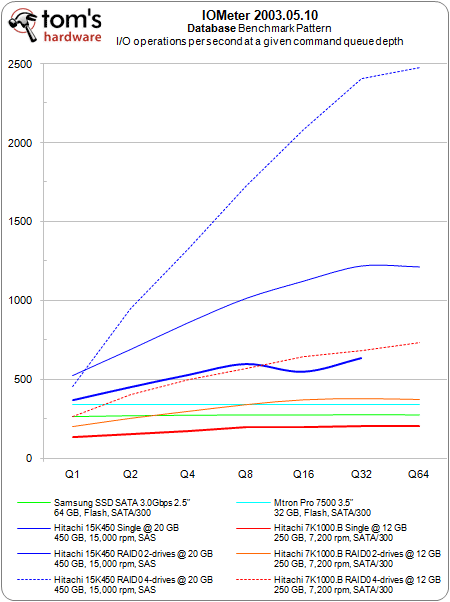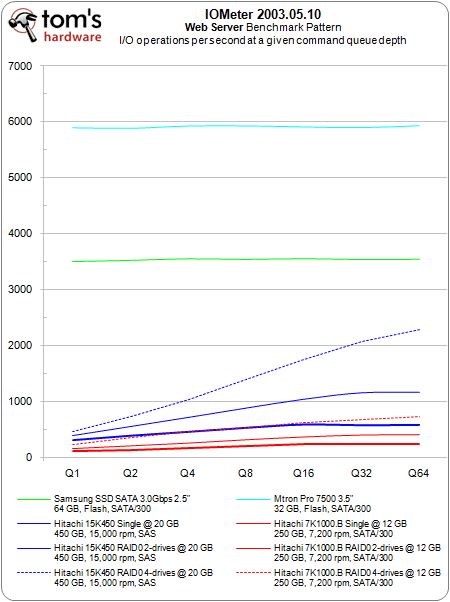Accelerate Your Hard Drive By Short Stroking
I/O RAID Benchmark Results--Comparison with Flash SSDs
This is probably the most important page in the benchmark section of this article. Let’s look at the results of the hard drives in a single-disk configuration, as well as two- and four-drive RAID 0. We’ll also compare the performance results with the two flash SSDs by Mtron and Samsung. In this section we only listed the fastest possible short stroking configurations for the Hitachi hard drives.
Isn’t it nice to see that an array of at least two short stroked hard drives can beat one individual flash SSD in the database benchmark?
The flash SSDs do better in the fileserver benchmark, as we needed four hard drives in short stroked configuration to beat the I/O performance of a single flash SSD. Still, the cost of four mainstream hard drives on a cheap RAID controller is still significantly lower than what you’d have to fork out for one of these flash SSDs.
No further questions here: the flash SSDs simply smoke all hard drive configurations when it comes to the I/O workload of a Webserver, which consists of lots of random reads of small blocks. Although short stroking makes a significant difference, the two flash SSDs are just so much faster.
In the workstation test, four hard drives can beat a single flash SSD. Again, keep the cost in mind: four low cost Serial ATA drives are extremely affordable, and will easily beat the expensive flash SSD, probably still providing higher capacity.
Get Tom's Hardware's best news and in-depth reviews, straight to your inbox.
Current page: I/O RAID Benchmark Results--Comparison with Flash SSDs
Prev Page I/O Benchmark Results: Hitachi Deskstar 7K1000.B, 250 GB SATA Next Page I/O Performance--Average Results


